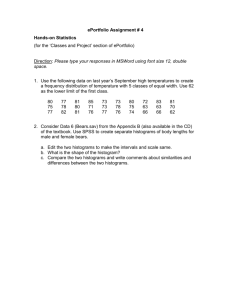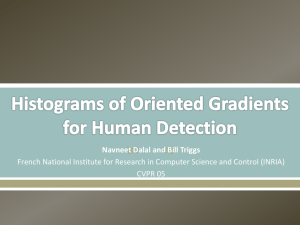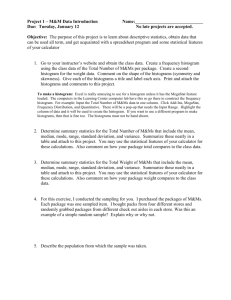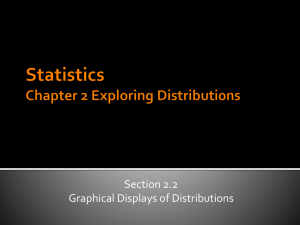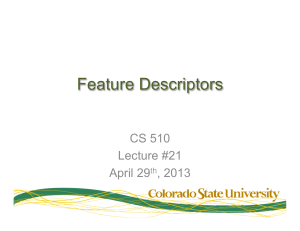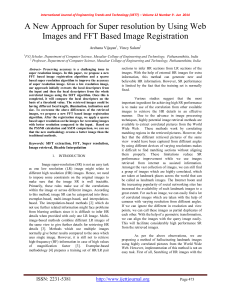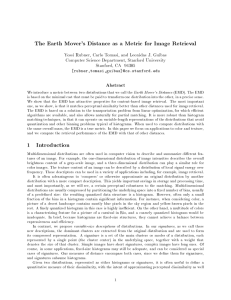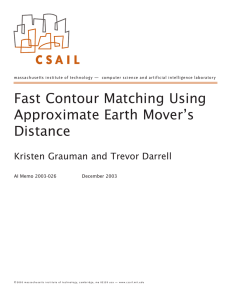Diffusion Distance for Histogram Comparison
advertisement
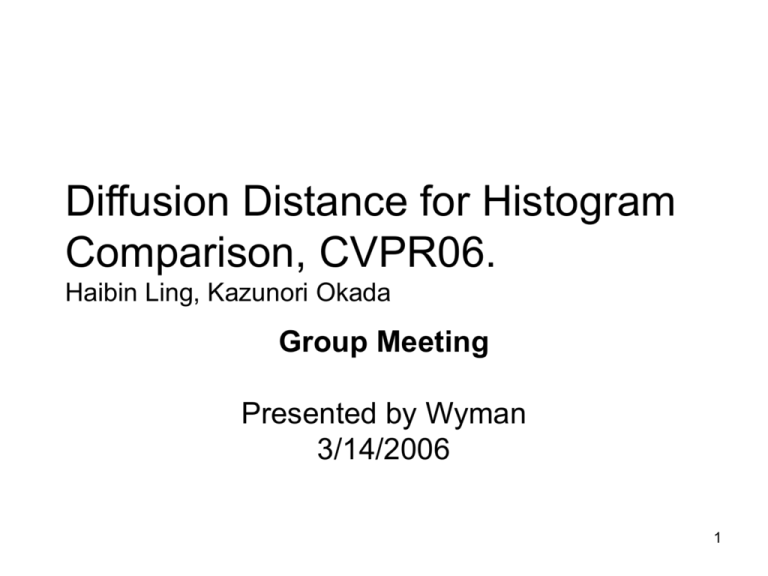
Diffusion Distance for Histogram Comparison, CVPR06. Haibin Ling, Kazunori Okada Group Meeting Presented by Wyman 3/14/2006 1 Introduction • This paper proposed: – A new dissimilarity measure between histogram-based descriptors called diffusion distance (SIFT, GLOH, Shape Context, Spin Image) • It performs better in both accuracy and efficiency than other distance measures in shape matching and interest point matching • It may be useful to other histogram comparison problems 2 Background • Given one image of an object, how do we find all of its remaining images in a database? Difficulties: • Shapes look similar, but are articulated Solutions: • Use histogrambased shape descriptor, such as Shape context Articulated shape database 3 Background – Shape Context PAMI 2002 Key idea: Represent an image in terms of descriptors at certain locations that describe the edges relative to those locations Shape context of a point is the histogram of the relative positions of all other points in the image. Use bins that are uniform in log-polar space to emphasize closeby, local structure. 4 Background – Shape Context • Original method use the chi-square test statistic to compare two histograms: Bin-to-bin distances between histograms/descriptors Some problems arose due to this distance metric! 5 Background – Shape Context • Problems: – Sensitive to quantization effects – Sensitive to distortion problems due to deformation, illumination change and noise 6 Background – Shape Context • Solutions: – Use cross-bin distance metric such as the Earth Mover’s Distance (EMD) • It allows bins at different locations to be partially matched • It solves quantization effect • Very slow! 7 Modeling Histogram Difference with a Heat Diffusion Process • First consider 1D distributions h1(x) and h2(x) • Their difference d(x) = h1(x) - h2(x) • Bin-by-bin distance can be obtained by putting a metric (e.g. L2 norm) on d(x), but we do not do so! • Treat the difference as an initial value (at time t = 0) of an isolated temperature field T(x,t), i.e. T(x,0) = d(x) 8 Heat Diffusion Equation As time goes by, d(x) vanishes everywhere! 9 The distance • A distance between the histograms is defined as: 10 Example 11 Example • From the result, we see that K are monotonically increasing with delta, thus K measures the degree of deformation between two histograms 12 Better than EMD EMD EMD = minimal amount of work that needs to be done to transform one distribution into the other The same for both differences! Diffusion Dist. Smaller distance for d12 13 Diffusion distance • Now consider 2D histograms Interpretation: Summing the value in each layer of difference’s pyramid (with exponentially decreasing size) 14 Experiment 1 • Shape Matching with Shape Context 15 Experiment 2 • Image Feature Matching – SIFT and Spin Image are also histogram-based descriptors – SIFT and Spin Image are originally designed to use L2 norm as the distance metric 16 Experiment 2 17 Experiment 2 • Running time is low! 18 Q&A Thank you! 19

